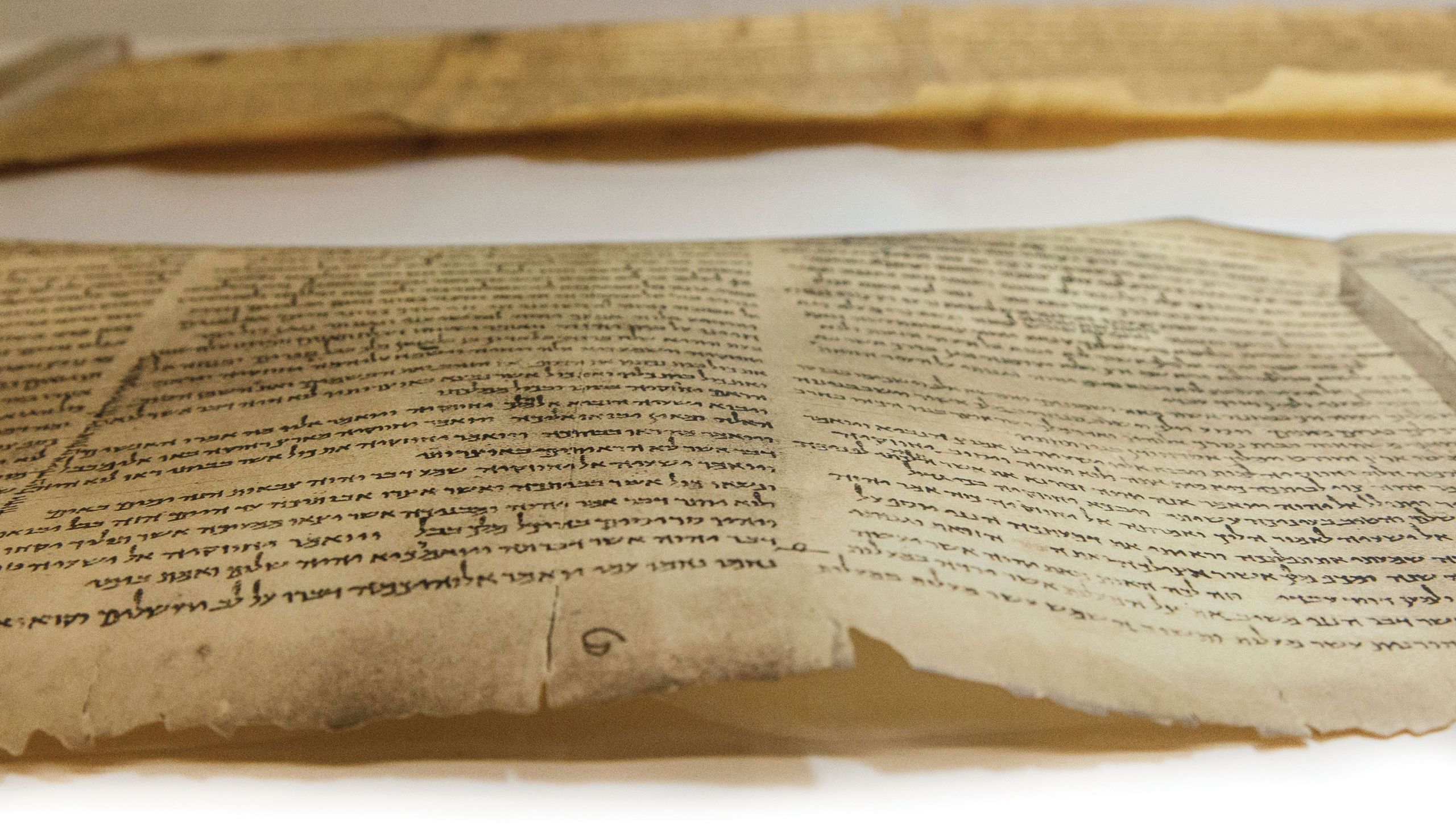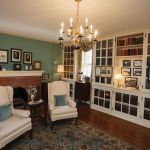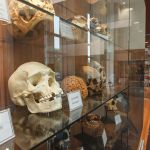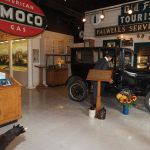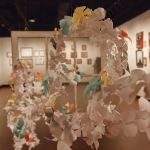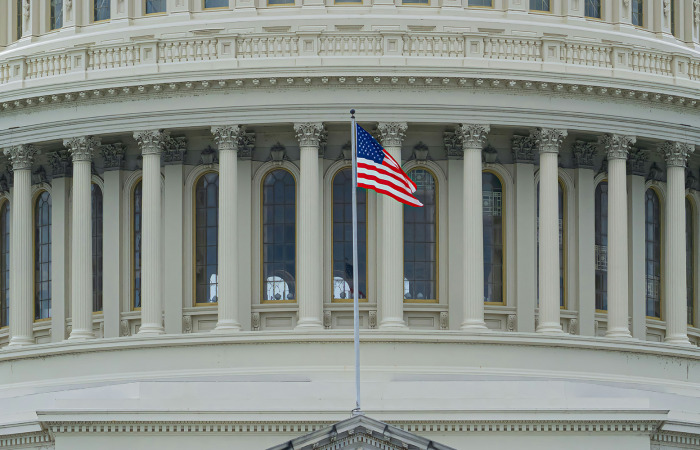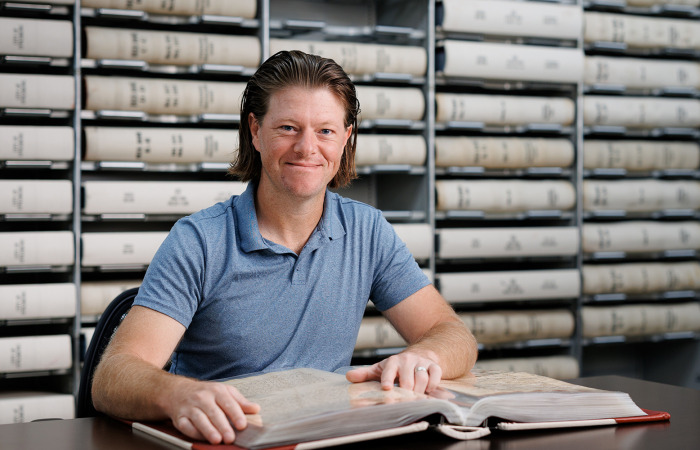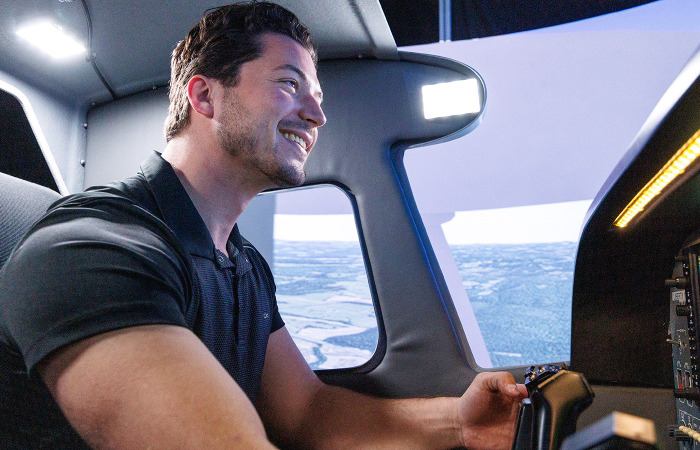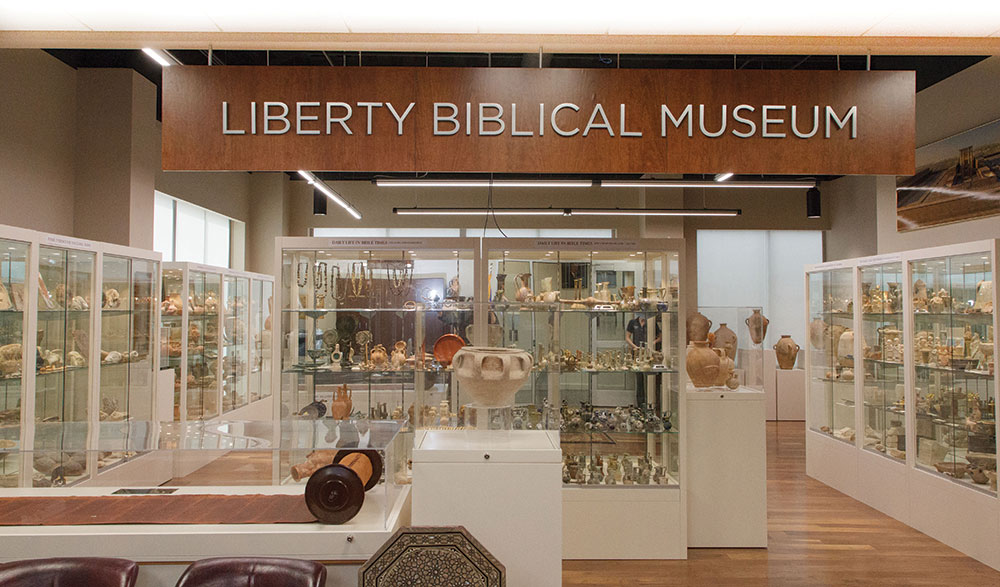 Most people assume that in order to experience the culture and historical artifacts of the Bible, they have to travel overseas. But the new Liberty Biblical Museum opens a window to the world of the Bible close to home.
Most people assume that in order to experience the culture and historical artifacts of the Bible, they have to travel overseas. But the new Liberty Biblical Museum opens a window to the world of the Bible close to home.
The museum, located in the Jerry Falwell Library, takes guests on a 4,000-year journey through Jewish history, showcasing the historical and cultural background of Scripture. Part of Liberty’s Center for Judaic Studies, the museum is open to faculty, staff, students, and the general public. The museum, featuring over 2,000 items, was dedicated on April 13 with a ribbon-cutting ceremony.
Dr. J. Randall Price, a distinguished research professor who serves as the museum’s curator and executive director of the Center for Judaic Studies, has amassed the collection over 35 years.
“Liberty’s foundation is the Bible, and its faculty is distinguished by a biblical worldview,” Price said. “For that reason, it is appropriate that we have a history of the Bible museum. We want people to see real biblical artifacts in order to experience history right on campus.”
Liberty President Jerry Falwell cut the ribbon during the ceremony and praised Price for his hard work on the project.
“The university is very privileged to have someone with a scholarly background like Dr. Price, who is able to bring a biblical museum to our campus,” Falwell said.
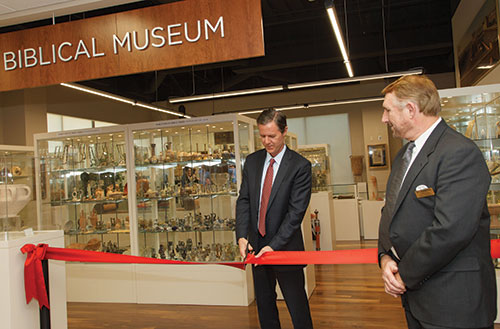
President Jerry Falwell cuts the ribbon at the Liberty Biblical Museum’s dedication alongside curator Dr. J. Randall Price.
Displays include authentic artifacts as well as exact replicas of the originals. Guests can view a portion of a basket similar to the one Moses was found in as a baby, original bricks from the walls of Jericho, a knife from the time of Abraham, a slingshot rock from the reign of David, crucifixion nails, and a genuine Roman soldier’s helmet from the time of the early church. Additionally, visitors can view authentic ancient texts, including both a 1612 King James Bible and a 1601 Geneva Bible. Pieces from Price’s collection were also on display at a New York gala in 2012, celebrating the History Channel’s miniseries “The Bible.”
Unique to Liberty’s museum are exact copies of some of the Dead Sea Scrolls. According to Price, there are only three other copies in the world, housed in the Vatican, Washington, D.C., and London.
“These are the oldest copies of the Bible that have ever existed. They date back to 200 years before the birth of Jesus, and every book of the Old Testament supports the Dead Sea Scrolls,” Price said. “To have a piece of them is very rare.”
According to Price, Liberty’s copy was printed on sheepskin and replicates the original scrolls down to the smallest details, including tears and breaks.
“It is important to print the scrolls exactly as they were because the Bible was passed down through people copying it, and the earlier copies no longer exist, for the most part,” he said. “At our museum, you are reading the Bible as it was preserved by faithful scribes who were very careful in transferring the Scriptures.”
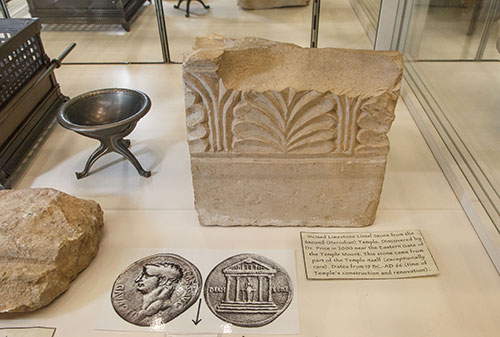
The museum also features a rare lintel stone from the Second (Herodian) Temple that Price was able to acquire during one of his visits to Israel.
“There are only a few pieces from this temple left in Israel, and I was there when this piece was unearthed,” he said. “This stone came from the eastern side of the temple.”
The museum also features the “Authentic Last Supper” exhibit, a recreation of the Upper Room, where Jesus met with His disciples to commemorate the Jewish Passover. It includes an accurate depiction of a three-sided table (known as a triclinium) and genuine first-century Herodian pottery that would have been available at the time of the Last Supper. An ornate woodcarving, based on the details in the Gospels, shows where the disciples would have been seated. A painting recreates the view from the Upper Room, overlooking the lower western city of Jerusalem and the Second (Herodian) Temple Mount.
Other artifacts include an original Torah scroll, a papyrus scroll from the first century written in Greek, cuneiform tablets, statues of various idols, jewelry and mirrors, and rare pottery from Egypt with stamps proving the pieces were once owned by royalty. A fossil exhibit focuses on evidence for the biblical flood and includes a nest of hadrosaurus eggs from China.
Price said that having a museum like this will create a legacy of biblical accuracy at Liberty University as it continues to grow and expand in the future.
“We want people to care about the Bible, and we want them to care about its message. When they see the accuracy of it firsthand, they become more excited about what they can learn.”
- Hours
Monday-Thursday 9 a.m.–4:30 p.m.
Free tours are available by appointment. - Contact
(434) 592-3249 or adevans@localhost for more information.
Campus Museums
Liberty also features several other museums that are free and open to the public.
Civil War Chaplains Museum
The National Civil War Chaplains Museum opened in 2010 and is located in an outbuilding of the Montview Mansion near the Hancock Welcome Center. It provides a research facility for those studying Civil War chaplaincy and includes a variety of educational resources on the role of chaplains, priests, rabbis, and religious organizations during the Civil War. Artifacts include items from both Confederate and Union chaplains, as well as the U.S. Christian Commission.
Contact (434) 582-7090 or kgrowlet@localhost for more information.
Jerry Falwell Museum
Since opening on Aug. 11, 2003, Dr. Jerry Falwell’s 70th birthday, the museum has given visitors the opportunity to learn about the life of Liberty’s founder and one of the most significant Christian leaders of the 20th century. Located in the Grand Lobby on the second floor of DeMoss Hall, the museum houses Falwell’s writings, including books and personal letters, as well as various memorabilia.
Contact (434) 582-7578 for more information.
Montview Mansion
Built in 1923 by U.S. Sen. Carter Glass to be his private residence, Montview Mansion was purchased by Liberty in 1977. For many years, it housed the executive offices of the university’s founder, Dr. Jerry Falwell, and current president, Jerry Falwell, Jr. Today, the mansion houses both Sen. Glass’ original office (pictured above) and Falwell, Sr.’s office, which has been preserved since his death in 2007. It also serves as a bed and breakfast to accommodate special guests of the university.
Tours are available Monday through Friday, 8 a.m.-5 p.m. Contact (434) 592-3017 or dawindsor@localhost for more information.
Creation Hall Museum
Opened in 2010, the museum displays various dinosaur fossils as well as 33 skull casts of gorillas, chimpanzees, and orangutans. The collection now boasts a complete Neanderthal skeleton and a replica of Australopithecine (Lucy). The museum is located on the second floor of the new Science Hall.
Contact (434) 582- 2209 for more information.
Art Gallery
The Liberty University Art Gallery, located on the fourth floor of DeMoss Hall, features 13-foot ceilings, track lighting, a professional hanging system, and includes pieces from some of the nation’s most well-known artists. Works by renowned landscape painter David Heath and comic book artist Sergio Cariello are on display in its permanent collection. Additionally, the gallery hosts rotating exhibits featuring the work of both Liberty students and professionals.
Contact (434) 592-5900 for more information.
